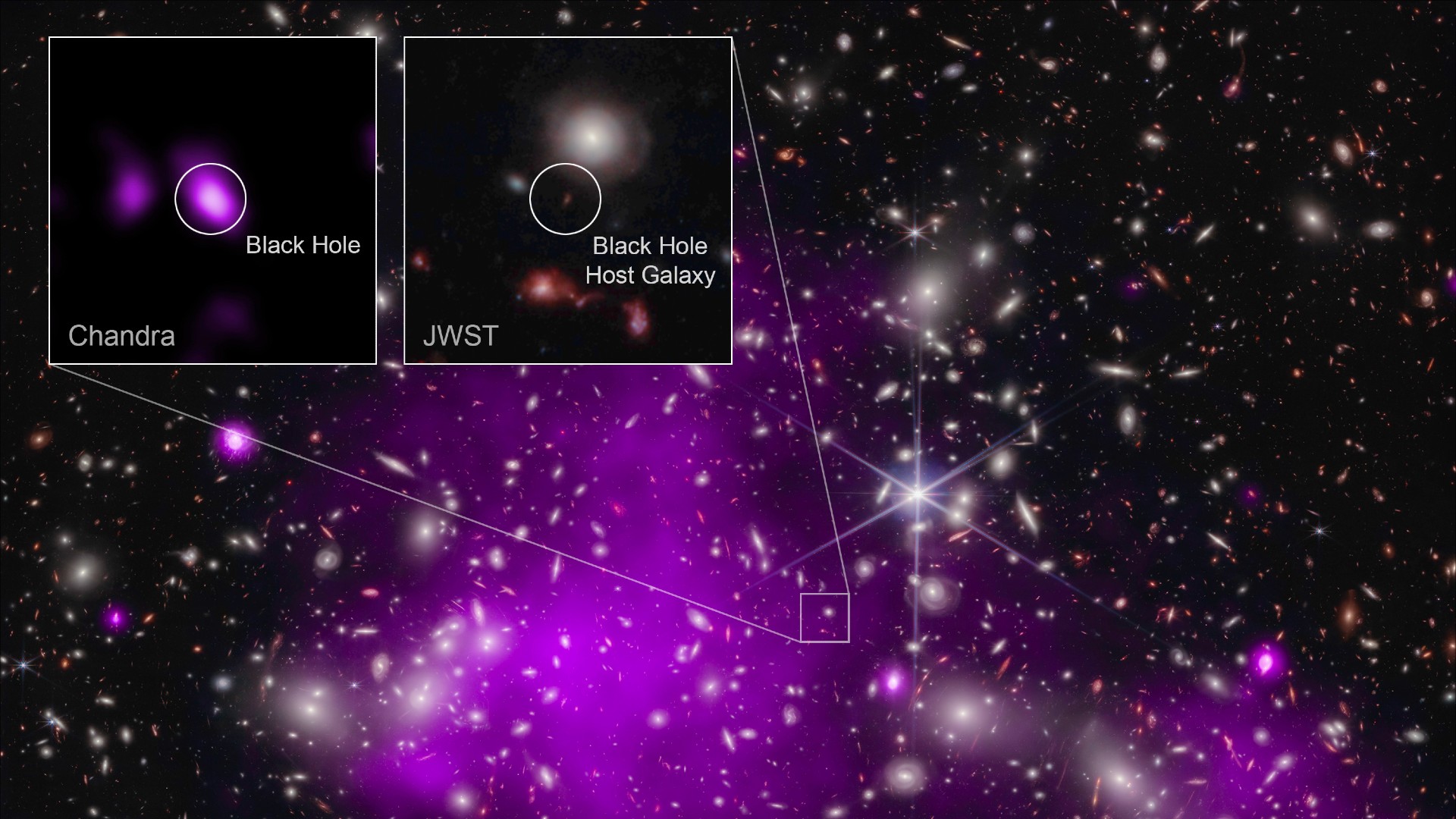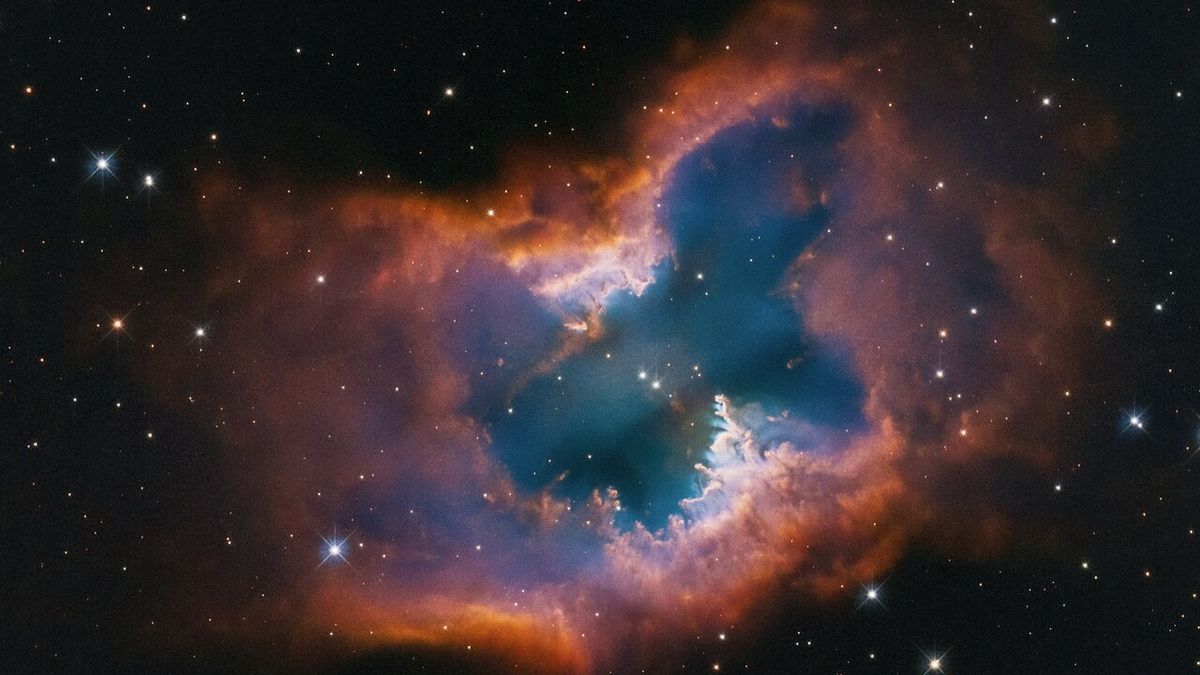An enormous black hole in the early universe is much bigger than it should be for its age, based on what we know about black hole formation. So could there be another way to make black holes?
In 2023, astronomers using the James Webb Space Telescope (JWST) and the Chandra X-ray Observatory spotted UHZ1, the home of a gigantic black hole that existed when the universe was only 470 million years old.
UHZ1's black hole weighs about 40 million solar masses. While that's much smaller than the largest supermassive black holes detected, it's still a whopper considering how early in the history of the universe it appeared.
In fact, it's too big. The only known way to create black holes is through the deaths of massive stars. When big stars die, they leave behind black holes up to a few dozen times the mass of the sun. From there, they can grow to gargantuan proportions by merging with other black holes and by accreting material from their surroundings.
All this is fine, but the problem with UHZ1 — and some of its friends — is that there isn't enough time to go from small seeds to supermassive monsters. The growth of black holes is limited by something called the Eddington rate. As material falls into a black hole, it compresses, heats up and emits radiation. This radiation prevents more material from falling in too quickly; it acts as a natural valve to keep any black hole on a slow-and-steady diet.
For UHZ1 to be born from a stellar-mass black hole, it would have to accrete material faster than the Eddington rate would allow. Although it's possible to break the Eddington limit in certain cases, it would have to sustain that pace for over 100 million years, which strains credibility.
So maybe UHZ1 wasn't born from the death of a star. Maybe something larger collapsed on its own to create a large-enough seed that could grow to supermassive status in a short enough time.
But the early universe wasn't exactly a complicated place. There weren't any stars, galaxies or even heavy elements. There were just giant clouds of pristine hydrogen and helium floating around, on their slow-and-steady way to becoming the rich tapestry of the modern-day cosmos.
Astrophysicists realized that it might be possible for these giant clouds of gas to collapse on their own. The trick is to keep them warm enough. If they cool off too quickly, then instead of collapsing as a monolithic entity, they fragment into many smaller pockets, producing a batch of normal-size stars.
Elements heavier than helium, known as "metals" in the jargon of astronomy, are very efficient at cooling off clouds of gas, because they can emit radiation at a variety of wavelengths. But those are absent in the early universe. Molecular hydrogen can also do the trick. But if there's enough ultraviolet (UV) radiation blasting around those gas clouds, then it breaks apart the molecules and keeps hydrogen in its atomic state.
If the conditions are just right, the gas cloud collapses into a gigantic, star-like structure that can weigh over 10,000 solar masses. Immediately, a black hole forms in its core, which then sucks in the surrounding material, quickly plumping up to a mass of over 1,000, or even 10,000, times the mass of the sun.
But there's one problem: We don't know how to generate that much UV radiation in the early universe. The handiest source of UV radiation is stars, which are in short supply … before the appearance of stars.
In recent years, astrophysicists have put together a variety of proposals to keep the hydrogen gas clouds heated. Some ideas rely on the first stars at the cosmic dawn to heat nearby clumps. Others are more exotic, relying on hypothetical forms of dark matter that could convert into radiation in the early, heady days of the universe.
Ultimately, we're not sure how giant black holes got so huge in the early universe. It could be from direct collapse; it could be from some exotic process; it could be from something we haven't figured out yet. But that's exactly why instruments like JWST are so useful: They create mysteries, but hopefully, they also help to solve those puzzles.








 English (US) ·
English (US) ·